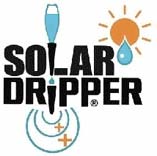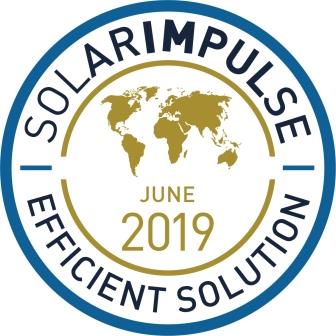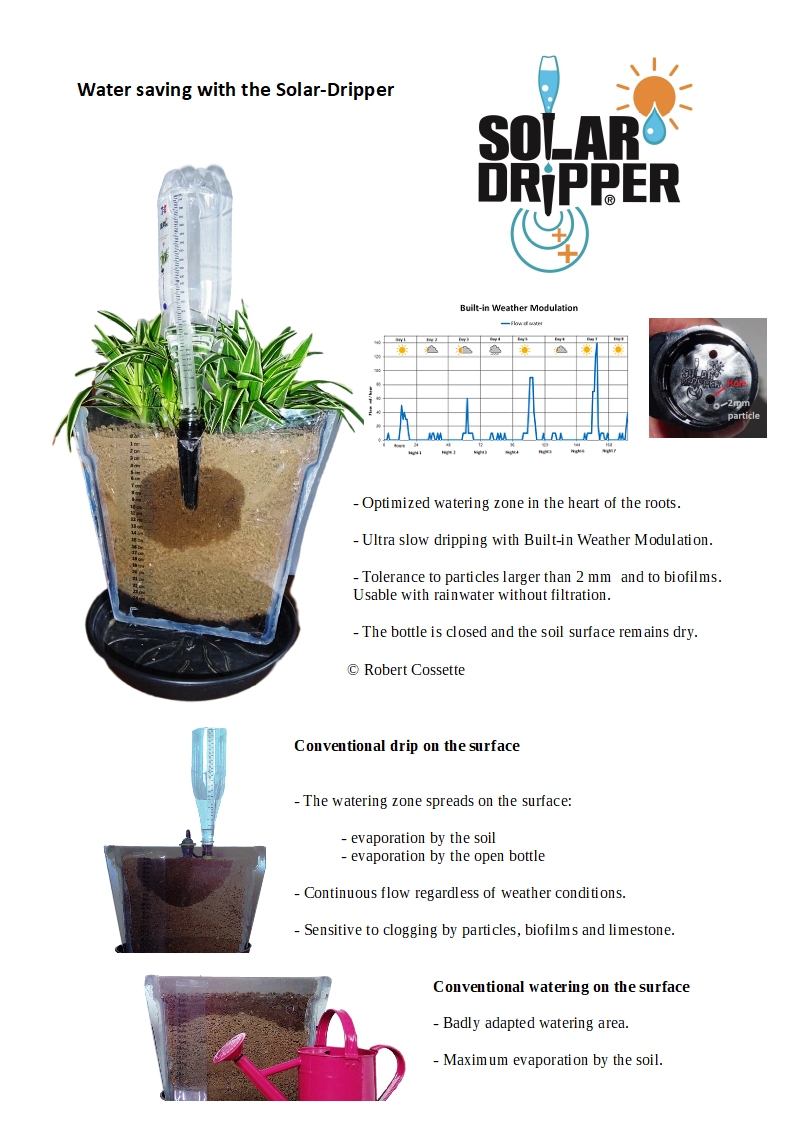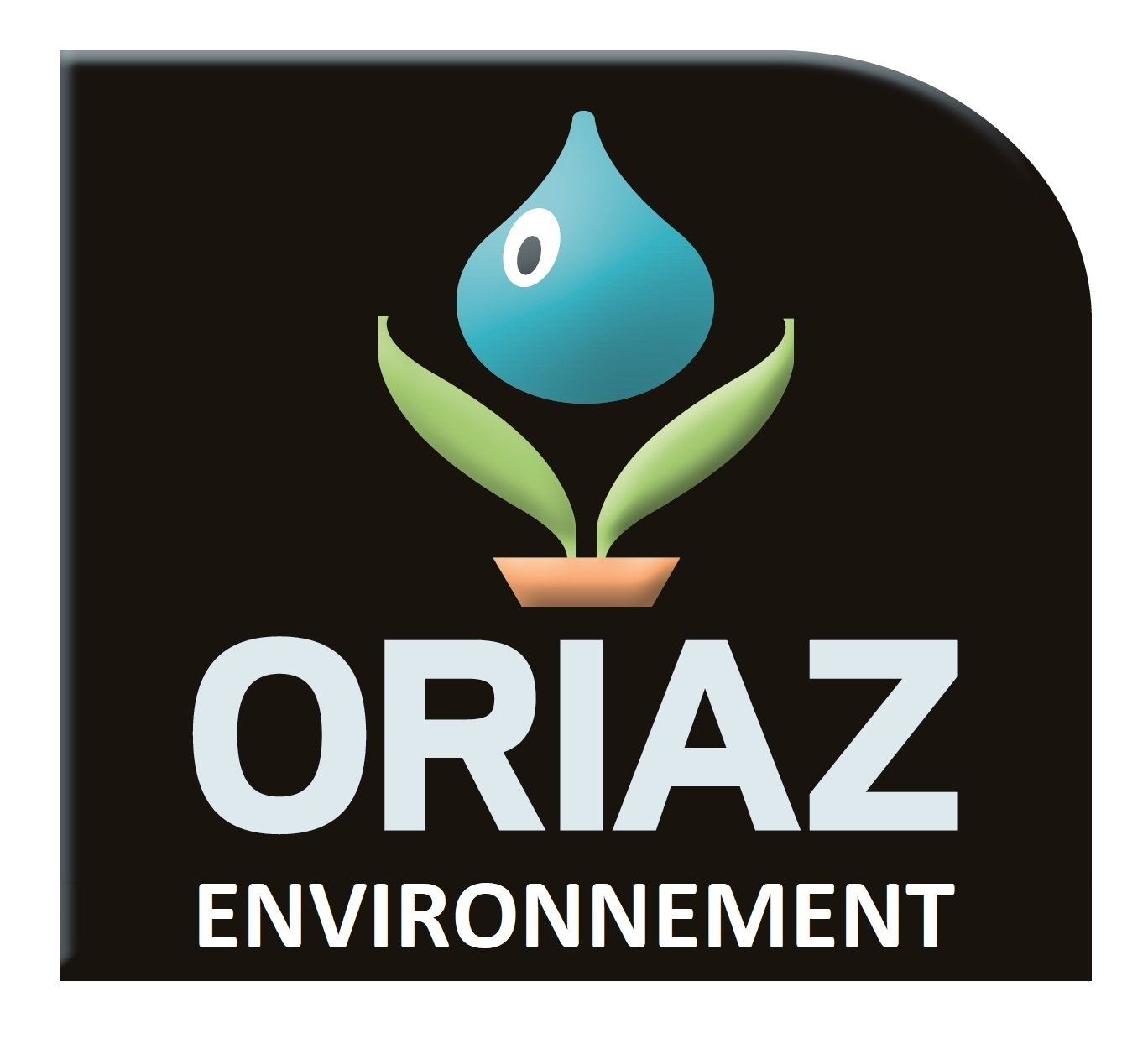Drip irrigation efficiency and water saving
Drip irrigation efficiency is an increasingly important topic. Climate changes expose us to drought even in countries where rainfall is regular. To improve an irrigation system, we have to identify and quantify each sources of losses between water input and the water efficiently captured by the plant’s roots.
We must not be content with virtuous intentions or fake quality labels, but make verifiable tests and measurements.
Here’s how to achieve the highest level of watering efficiency of 99% with the ORIAZ Solar-Dripper. Efficiency is defined as the % of water actually used by the plant in proportion to the water volume at the start of the system. We measured evaporation loss at less than 1%.
The subsurface Solar-Dripper was tested in France, in Switzerland, in Canada, in Burkina Faso, in Masagascar and in now distributed in Uzbekistan for family farms nears the Aral Sea. This french made irrigation system was also tested and recommended in USA by the Rich Earth Institute.
Watering maintained during cloudy weather> already about 30% loss
This loss due to lack of flow modulation is the first problem of automatic watering systems using simple timers, porous cones or gravity diffusers in a continuous mode like a perfusion. If the watering flow is not modulated, the watering system will lose about 30% water with unwanted watering during cloudy days. A 24-hour continuous drip irrigation mode can even affect the plants health by causing root rott due to asphyxia.
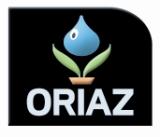
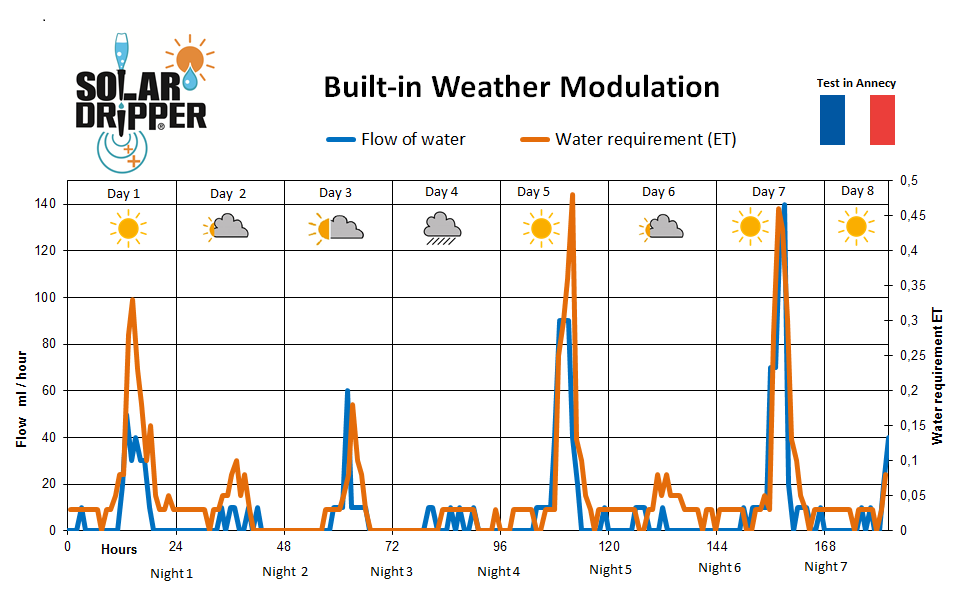
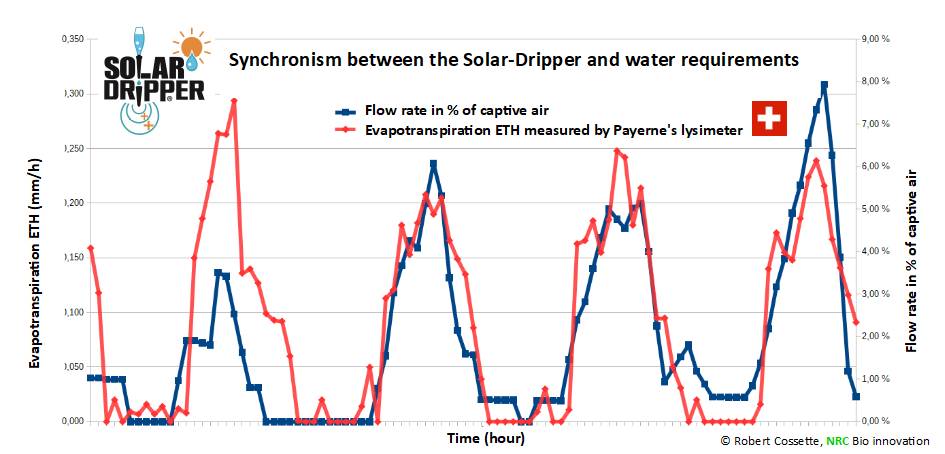
The patented Solar-Dripper technology eliminates unwanted watering. It adjusts the watering flow continuously. Regular watering pauses ensure proper ground oxygenation. During cloudy days, the Solar-Dripper is not triggered by a rise in temperature and the flow almost stops. Example of daily temperature cycle:

These two videos demonstrate the modulation. The first one shows the ORIAZ Solar-Dripper watering tomato plants during a sunny day. But the second video shows the same system stopped during a rainy day.
This automatic adaptation of the Solar-Dripper © is unique.
Solar-Dripper dripping on a sunny day: this normal flow is caused by the sun’s heat: each tomato plant receives exactly 750 ml of water from each bottle. The small difference in timing does not matter because each bottle is emptied before refilling. The resulting irrigation coefficient of variation is 0% with perfect distribution for each tomato plant.
The same Solar-Dripper irrigation system during a rainy day: the 750 ml water reserves is kept for the next day and will drip only if required.
Evaporation: 5 to 40% losses
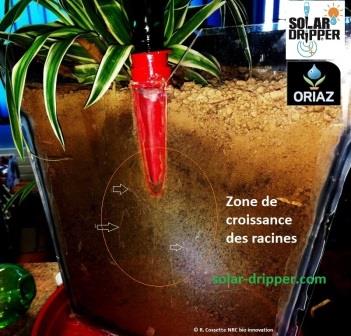
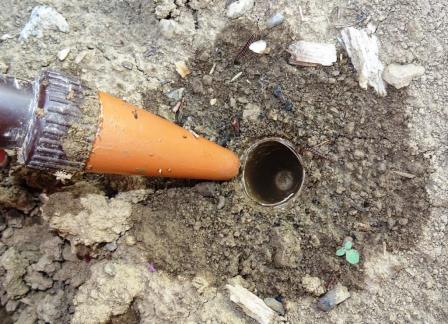
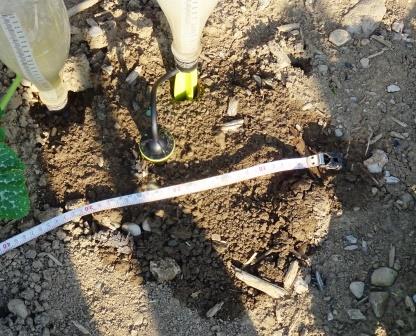
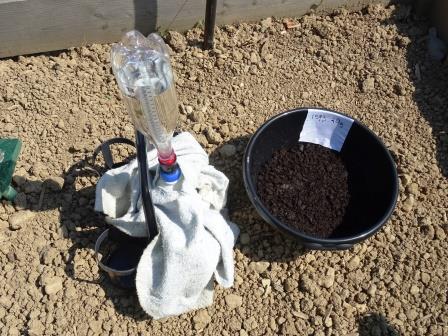
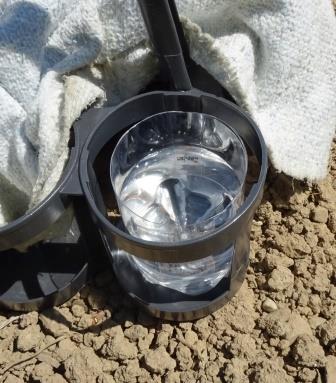
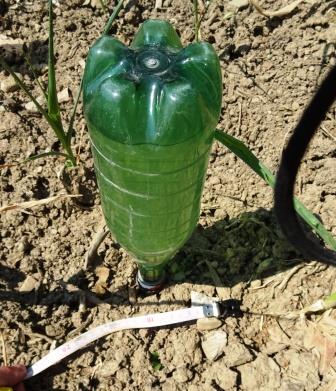
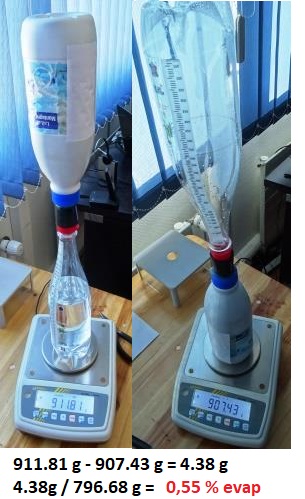
We have measured the evaporation loss from the small gap between the Solar-Dripper cone and the regulator post. Only 4.38 grams of water was lost for a watering volume of 796.68 ml. This represents only 0.55% of the water.
Percolation: 5 to 30%
Percolation is the surplus of water that goes into the ground and ultimately reaches the water table. This loss is related to the amount of water applied and to the speed of application.
The micro-flow up to 1 000 times slower with the Solar-Dripper can eliminate the percolation.
Conventional drippers have a typical flow rate of 400 ml / hr to 8000 ml / hr (IWA-20 ref). These emitters are activated a few minutes per day with pumps to apply a desired nominal volume of water on each plant. The slower watering rate of the Solar-Dripper with micro-flow from 0.3 ml / h to 500 ml / h reduces the percolation. The roots can capture all the water because of the slower rate of the Solar-Dripper.
To test the absence of percolation, we use potted plants. It is easy to verify that water does not accumulate in the plate when the Solar-Dripper is properly calibrated.
Leakage: 5 to 20%
Leaks in tubing systems are a constant concern for the user. Gaskets, fittings, and tubes can be damaged at any time by movement of the ground, rodents, frost, or wear. As the tubing is often buried, leaks are not easily detected.
Watering off target 5 to 30%.
Sprinkler systems do not specifically target each plant. A lot of water falls away from the plant. This water can cause surface runoff.
Variation in drip rates of a dripper network: 5 to 20% loss.
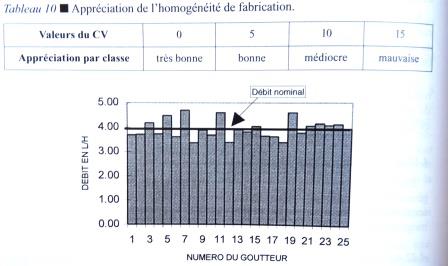
From The “Traité d’Irrigation” page 612
When conventional drippers are new and bench-tested according to ISO 9261 standard, they already have a slight difference of flow of about 2 to 10 % from the nominal flow rate. Each dripper connected to a tubing network does not receive exactly the same pressure or the same duration. In addition, each dripper gets clogged progressively at a different speed.
This variation results in uncontrollable differences between the desired nominal flow and the actual flow of each watering points. Flow differences between drippers can easily reach 5 to 20% after one or two years. When there is more than 20% variation it becomes necessary to change or purge the network. The publication Traité d’Irrigation states “… in all cases, the watering uniformity reduction after one year was 20% and we have observed 6 % of total dripper plugging”.
Conclusion: to ensure that each plant receives the minimum watering volume, an overdose is applied over the entire network. This overdose of compensation for lack of uniformity can easily represent a loss of about 5 to 20%.
The Irrigation System Autiting Guide published in 2015 explains this on page 55:

With the Solar-Dripper it’s different. Each plant receives exactly the volume of water from its bottle. The user can control the watering dose.
The manufacturing coefficient of variation of the Solar-Dripper was measures many times at 1.7 to 5 %. But the effective coefficient of irrigation variation is 0 % (perfect) because each bottle is emptied during the watering pause before refilling. If you water 12 tomato palnts with 800 ml of water the distribution ballance will stay perfect.
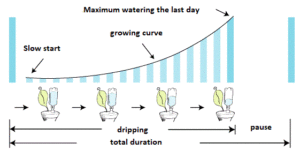
This accuracy and perfect uniformity of watering volumes to the nearest ml is useful when performing comparative studies between batches of plants. Otherwise you introduce inaccuracy in water or nutrient intake.
Water required for cleaning conventional drippers
The problem of clogging is a big constraint of drip irrigation. With conventional drippers, regular cleaning and purges are required to remove biofilms. These cleaning operations are often done with toxic products such as acid or bleach. The toxic water volume is not only lost but can pose a problem to permaculture by sterilizing the soil and killing the microspocic flora.
Some porous systems recommend cleaning after each usage because their flow rates tend to decrease quite rapidly. Some continuous gravity diffuser systems sometimes recommend the use of “pure water” to prevent clogging. With conventional drippers, to obtain a lower a low flow rate, you have to use a thinner passage leading to an increased clogging sensitivity.
In practice, flow rates of less than 2 liters per hour are rarely used with conventional drippers because of the increased clogging problem. Infusion-type drip systems became clogged in a few days during our tests. In the hospital, infusion systems with low flow of 50 ml/h use purified solutions. They are single-use devices. Such systems are prone to breakdowns in the garden as soon as biofilms are formed.
The susceptibility to clogging of conventional drippers is classified into five categories according to the “Traité d’irrigation”.
- Ultra sensitive US for drippers that require a complete filtration of less than 80 micrometers (pure water).
- Very sensitive TS which requires a filtration of 80 micrometers.
- Sensitive S which requires a filtration of 100 micrometers.
- Not very sensitive PS which requires a filtration of 125 micrometers.
- Very low sensitivity TPS requiring a filtration of 150 micrometers
The Solar-Dripper thus defines a new class UTC : Ultra Tolerant to Biofilm Clogging with the free passage of particles of more than 2 mm in diameter.
To compare clogging classes with the Solar-Dripper UTC © class, here are circles representing the proposed filtration sizes between the conventional clogging sensitivity classes and the new UTC class.
In fact, particles of more than 2mm will not cause the Solar-Dripper to fail but particles simply stay in the bottle until removed manually by the user. We use rainwater without screening and we find occasionally a large particle in the bottle.
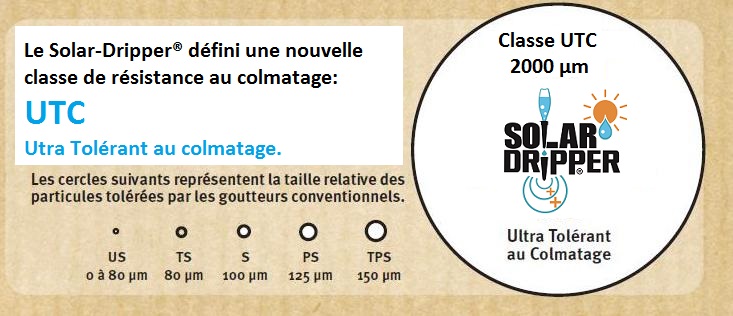
Picture of 2mm particle and biofilm accumulation example after using 100% unfiltered rainwater.
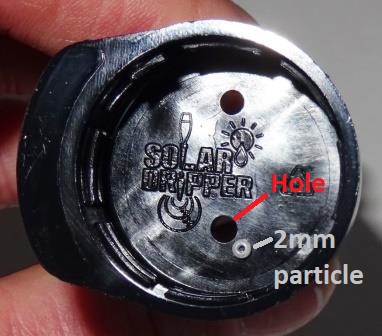
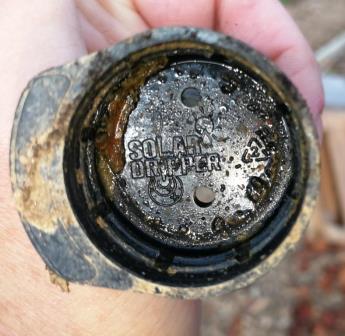
Urine can be used as a valuable natural fertilizer with the Solar-Dripper: it will not clog.
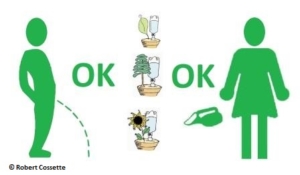
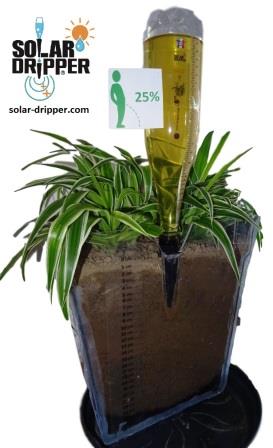
In conclusion the accumulation of each loss of automatic watering systems increases rapidly.
According to the IWA-20 standard published in March 2017, this irrigation efficiency varies from 45 to 95% for the best subsurface drips.
With its unique design, the ORIAZ Solar-Dripper © combines 3 major advantages over conventional subsurface drippers for water saving:
-
- A flow rate naturally synchronized with the plant needs.
- Up to 1,000 times slower irrigation rates
- A 10 times better tolerance to clogging.
The ORIAZ Solar-Dripper © watering system can therefore achieve 99 % drip efficiency. It solves the clogging problem and release the user from electric pumps, tubings, filtration systems and irrigations control system complexity.

© ORIAZ Environnement, Robert Cossette. Contact us Member of the World Alliance for Efficient Solutions
